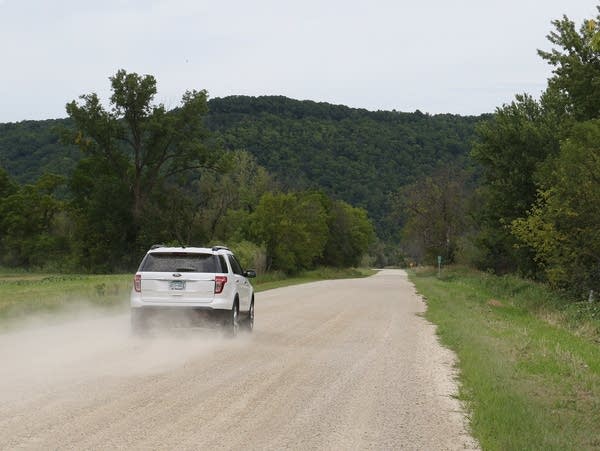Rustic remnant: A trip along Minnesota's last unpaved state highway

Go Deeper.
Create an account or log in to save stories.
Like this?
Thanks for liking this story! We have added it to a list of your favorite stories.
The gravel road twists and turns, winding past ponds and wetlands along one side of the Whitewater River valley in southeastern Minnesota.
As it traverses parts of the Whitewater Wildlife Management Area, this stretch of Minnesota Highway 74 takes travelers off the beaten path and into nature, with frequent sightings of waterfowl and other wildlife, along with plentiful wildflowers.
And in some ways, it takes drivers back in time: The seven-mile stretch of Highway 74 that straddles the Winona-Wabasha county line is the last remaining gravel road maintained by the Minnesota Department of Transportation.
There are plenty of unpaved county and local roads around the state, but the segment between Weaver and the ghost town of Beaver is the only gravel road in MnDOT's state system that includes more than 11,000 miles of highway.
Turn Up Your Support
MPR News helps you turn down the noise and build shared understanding. Turn up your support for this public resource and keep trusted journalism accessible to all.

Highway 74 provides a convenient route for some local residents, and access to the wildlife management area for hunters, birdwatchers and other outdoor enthusiasts. But on average, just 85 vehicles a day travel that stretch of road — the lowest count for a state highway. (That compares to about 5,000 a day on nearby portions of U.S. Highway 61, and well over 100,000 a day on Twin Cities freeways.)
Why has it not been paved?

"It would be very expensive to do so, because the road would need to be raised to a height above the water table and up from the swampy areas that are on each side," said Mike Dougherty, director of public engagement and communications for MnDOT's District 6.
Highways with higher traffic counts get the priority for funding, he said.
That's not to say Highway 74 gets no attention. Given the road's path through wetlands and along the Whitewater River, there can be problems with flooding and during the spring thaw.
"The spring thaw is hard on all of our roads, but this one can break up even more as the soils thaw and drain, so unless it's a gradual thaw, we often end up closing the road for several weeks in the spring to preserve it and minimize damage to it," Dougherty said.

"The water around it and the water table make the road bed very loose and pliable at these times. It has also flooded at times in the region, so that causes more damage. We blade and put down more gravel in stretches, so it takes a fair amount of attention from our crews compared to some of other roads."





